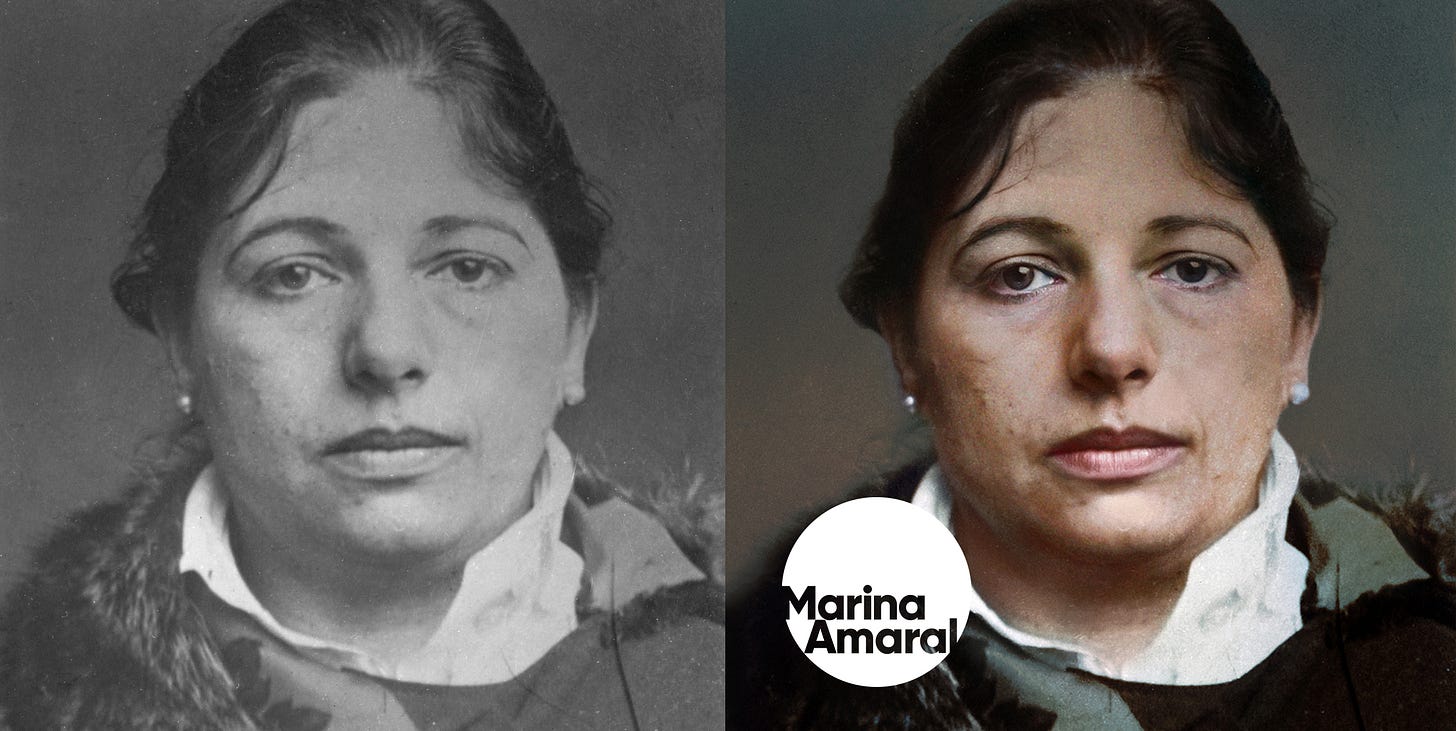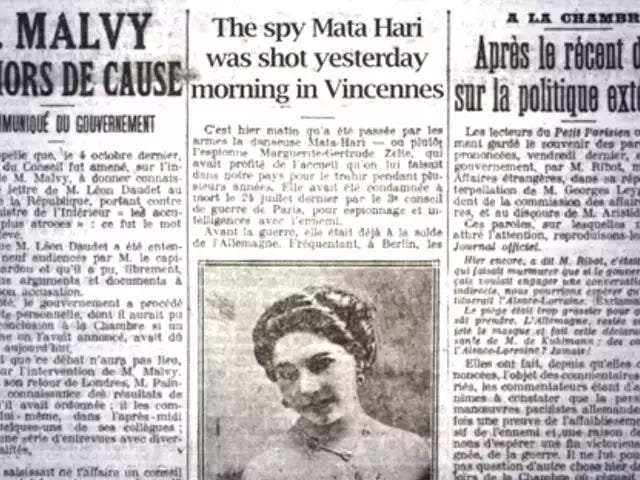“I am ready”.
These were some of Mata Hari's last words, scribbled on a piece of paper right before she left her prison cell in the early hours of October 15, 1917. She walked confidently, dressed in black stockings and high heels, to meet her destiny: a firing squad, ready to shoot at her. She was ready to go - but, according to some accounts, not without blowing a kiss to her executioners first.
We will never know for sure whether this last act of defiance actually took place, but one thing is certain: Margaretha Zelle, the woman who gave life to the seductive exotic dancer and performer Mata Hari, is exactly the person who would have the guts to do something like this.
“I was not content at home… I wanted to live like a colorful butterfly in the sun”.
Margaretha Geertruida Zelle was born in Leeuwarden, Netherlands on August 7, 1876. Her father, Adam Zelle, was a successful businessman who amassed enough wealth to provide Margaretha and her siblings with a comfortable childhood. This privileged reality, however, did not last long. Margaretha's dad went bankrupt in 1889. Some time later he left his wife, Antje van der Meulen, for another woman. Antje passed away two years later. Margaretha’s family as she knew it had crumbled. She spent the next few years living in dreadful circumstances, first with her godfather, then with her cousin.
It wasn't until she was 18 that her destiny began to take shape. While reading a Dutch newspaper in March 1895, Margaretha came across an advertisement placed by 39-year-old Dutch Colonial Army Captain Rudolf MacLeod, who was looking for a wife. The advertisement had been placed there as a joke, but Zelle took it extremely seriously, prompting her to respond with a photo of herself that piqued the captain's interest. The romance quickly blossomed. The pair began exchanging passionate letters and eventually got married in July 1895, settling for a tragic and turbulent life together in Amsterdam. Margaretha gave birth to her son, Norman John MacLeod, on January 30, 1897, and, a year later, to her daughter Louise Jeanne MacLeod.
The family relocated to Malang on the east side of the island of Java in 1898. It was there that a series of tragic events unleashed in Zelle’s life: soon after the family’s arrival, the children became extremely ill, and young Norman passed away two days later. This was a huge blow to Margaretha who, at that time, was already living under violent circumstances with her alcoholic, cheating and abusive husband. She left him temporarily, joined a dance company and immersed herself in the Indonesian culture.
The couple moved back to Amsterdam and separated, this time for good, on 30 August 1902. Margaretha was given custody of Jeanne, but Ruldolf refused to accept it. He chose not to return the young child to her mother after picking her up for a visit. Margaretha lacked the financial resources to resist the situation and was compelled to accept it. In 1903, she moved to Paris - unaware of how dramatically her life would change.
There, she had to rely on her beauty and sex appeal to survive, first making money posing for painters, and later performing in the circus. She didn’t have to wait long to rise to fame, though: Paris’ culture scene was buzzing at the time, and Margaretha, now going by the stage name of Mata Hari (which is Malay for “eye of the day”), quickly gained prominence as an exotic dancer.
A new chapter was about to begin.
Mata Hari captivated her audiences with her carefree attitude and her elegant and seductive performances. In this sense, she was a pioneer, elevating erotic dance to a more glamorous status.
“She undulates beneath veils that cloak and reveal her at the same time. It bears no resemblance to anything we’ve ever seen. Her breasts rise listlessly, her eyes drown in themselves. Her hands stretch out and fall back down, as if laden with sun and effort.” - Courrier français, 1905
Unfortunately, almost as fast as she achieved fame, her career began to collapse, with her final performance taking place on March 13, 1915.
Print available
During World War I, Mata Hari became involved in a romantic relationship with 23-year-old Russian pilot Captain Vadim Maslov - a fact that would change (and ultimately end) her life.
Spy or Scapegoat?
“The facts regarding her espionage activities remain obscure. According to one account, in the spring of 1916, while she was living in The Hague, a German consul is said to have offered to pay her for whatever information she could obtain on her next trip to France. After her arrest by the French, she acknowledged only that she had given some outdated information to a German intelligence officer.
According to statements that Mata Hari supposedly made, she had agreed to act as a French spy in German-occupied Belgium and did not bother to tell French intelligence of her prior arrangement with the Germans. She had intended to secure for the Allies the assistance of Ernest Augustus, duke of Brunswick-Lüneburg in Germany and heir to the dukedom of Cumberland in the British peerage.
The French began to suspect her of duplicity, and on Feb. 13, 1917, she was arrested in Paris. She was imprisoned, tried by a military court on July 24–25, 1917, sentenced to death, and shot by a firing squad.” Read More
Both French and British intelligence suspected Mata Hari of spying for Germany, but neither could ever provide conclusive evidence against her.
British historian Julie Wheelwright stated that she was "... an independent woman, a divorcee, a citizen of a neutral country, a courtesan and a dancer, which made her a perfect scapegoat for the French, who were then losing the war. She was kind of held up as an example of what might happen if your morals were too loose.”
Despite enormous pressure during her trials, Zelle maintained her innocence until the very end. In one of the letters she wrote to the Dutch Ambassador in Paris, she stated that: "My international connections are due of my work as a dancer, nothing else. (…) Because I really did not spy, it is terrible that I cannot defend myself."
British reporter Henry Wales was present at her execution and recorded what he saw: “Slowly, inertly, she settled to her knees, her head up always, and without the slightest change of expression on her face. For the fraction of a second it seemed she tottered there, on her knees, gazing directly at those who had taken her life. Then she fell backward, bending at the waist, with her legs doubled up beneath her."
Zelle was 41 when she died. Her body, not claimed by family members, was used for medical study. Her head was embalmed and kept in the Museum of Anatomy in Paris until 2000, when archivists discovered that it had disappeared.
It remains missing to this day.
“I have encountered in this world riff-raff and good people. I lose. I win. I defend myself when I am attacked. I take when someone has taken from me. But I beg you to believe me; I have never done an act of espionage against France. Never. Never.”
200 incredible women just like Mata Hari are featured in my new book, A Woman’s World. If you enjoy my work, please consider pre-ordering the book via this link. Thank you!
Further reading
Mata Hari: the spy who wasn't really a spy
Mother, dancer, wife, spy: the real Mata Hari
Why Mata Hari Wasn't a Cunning Spy After All
Revisiting the Myth of Mata Hari, From Sultry Spy to Government Scapegoat









